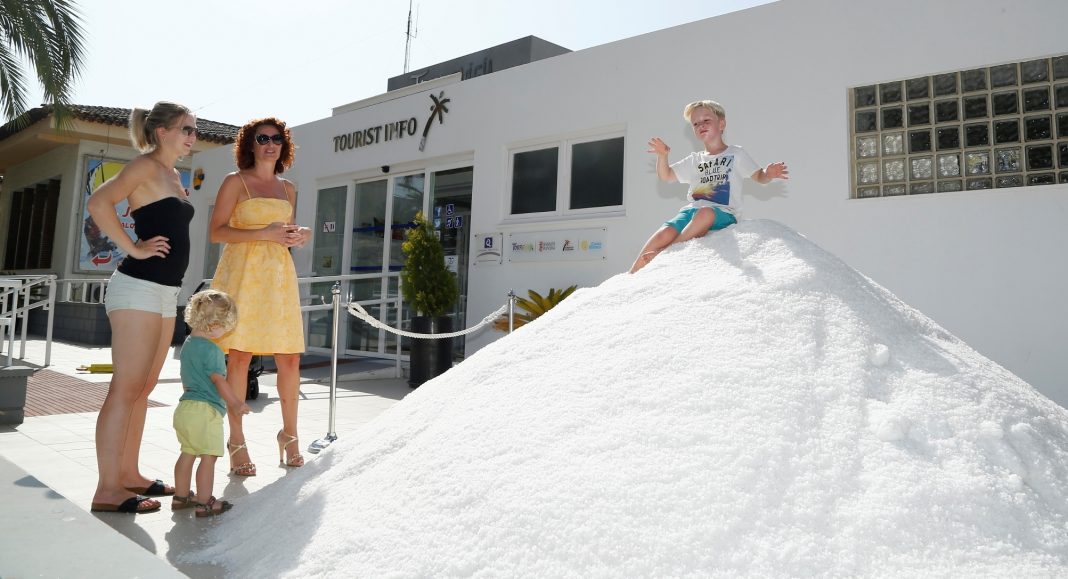Heavy machinery is once again rolling across the salt flats in the Torrevieja lagoon as the contractor, Grupo Salins España, has started the extraction work, which the Engineering Director, Joseph Pérez, expects to extract about 600,000 tons of salt by 30th June next year.
“The bed has accumulated a layer of salt of something more than twelve centimetres, a depth not seen during the last two years, following the flooding of the industrial facilities at the end of 2016. The weather conditions have been much more suitable for the production of salt this year,” he said, “while two years ago the storms allowed us to “harvest” only 250,000 tons while last year we were able to reach 450,000 tons”.
During that period the company, a Spanish subsidiary of a French multinational group, had to resort to importing salt from some of its salt production plants in the north and west of Africa to ensure that it was able to meet its customer’s requirements.
Of the 600,000 tons that the company is expecting to harvest this year, 450,000 are destined for export by sea from the Torrevieja port. Most of the salt from Torrevieja, around 65% of the total, ends up being used in Northern and Western Europe to thaw roads.
The company has around a hundred clients, some of which take as much as 30,000 tons, which they store in bulk at European ports for further distribution. Another 200,000 tons has a food use, not just table salt but also for salting and for animal feed.
Torrevieja salt is also used in the leather tanning process or for the chemical industry – it is a product for which there are over 14,000 uses.
The production exercises and turnover volume are quantified in the salt industry from August to June of the following year. The extraction process only stops during the month of July, allowing staff a month which is dedicated exclusively to the maintenance of the facilities.
The water surface of the lagoon, which rarely exceeds one and a half metres in depth, occupies 1,400 hectares but during the 11 months of extraction only about half of the area is used.
Torrevieja is the largest producer of sea salt in Europe because it can be extracted almost all year round thanks to technology that allows the production without drying the lagoon, as otherwise happens in conventional saltpans.
Image: In promoting the industry outside the Tourist office last year the Councillor for Tourism and the Environment, Fanny Serrano, said that salt works and crafts form part of the heritage of Torrevieja





